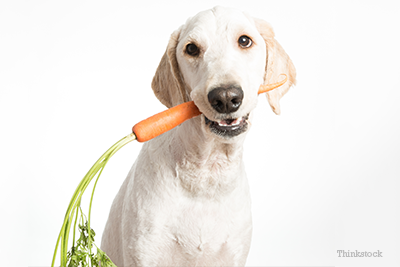Cancers, be they in people or animals, are a terrible reality of life. Because cancers cause great suffering among both pets and humans, researchers are continually on the lookout for causes, preventions and cures.
How often are animals affected by cancer?
Unfortunately, cancer is a major killer among humans and animals alike. It’s the leading cause of death among older cats and dogs, and accounts for approximately 50% of deaths each year, says the Pet Cancer Center. The good news is cancer can be successfully treated if diagnosed early. Unfortunately, even with aggressive treatment recurrence is possible because the cancer stem cells are often resistant.  Does diet and nutrition play a role in the management of cancer?
Does diet and nutrition play a role in the management of cancer?
Nutrition may play a role in the management of some cancers. The Pet Cancer Center says, “Proper Nutrition while undergoing cancer treatment is essential to maintain your pet’s strength, improve survival times, quality of life and maximize response to therapy.” With over a hundred specific cancers, each behaving and responding differently, scientists are looking in some pretty surprising places for new, nutritional approaches that improve odds of success.
New compound may help prevent regrowth of cancer cells
Recent evidence indicates a compound that occurs naturally in certain vegetables (like cauliflower, cabbage, broccoli and Brussels sprouts) may help reduce the possibility of some cancers spreading. Newswise.com reports that associate professor, Moul Dey, of the South Dakota State University Department of Health and Nutritional Sciences, has been doing studies on something called phenethyl isothiocyanate (PEITC) for five-years.
Professor Dey believes that through the process of chewing these vegetables, chemicals and enzymes are released that combine to form PEITC. She also believes that PEITIC plays a role in cancer prevention and control. However, it is not just a simple matter of eating some vegetables, but rather, eating lots of the right vegetables, consistently1. Dey’s studies have been designed to support her belief that sufficient cancer-preventing levels of PEITC can be achieved through diet alone.
How can PEITIC support current cancer treatments?
One important thing to understand about tumors is that only a small percentage of tumor cells are cancer cells (less than 5 percent1). While chemotherapy and radiation can make tumors disappear, these cancer cells live on. “These cells are frequently resistant to conventional therapies,” says Dey. They can regrow the tumor and move on to other parts of the body1.
It’s for this reason that PEITIC could be so important. Dey thinks she can use it to target these dangerous and elusive cancer cells.
What evidence supports the role of PEITC?
“When Dey and her team treated human cervical cancer stem cells with PEITC in a Petri dish, about 75 percent died within 24 hours," says Newswire. Additionally, Dey and team, working with SDSU veterinary pathologist David Knudsen, found that even small amounts of PEITC can, “dramatically prevent the spread of cancer in mouse lung tissue.”
Still a long way to go
These studies are very exciting, but they are also all preliminary and even Dr. Dey cautioned that further testing is necessary.
Previous studies, and scientific literature, have indicated that the concentrations of PEITC Dey and her team typically use in their research, “May be achieved through diets rich in certain types of ‘cruciferous’ vegetables, particularly land and watercress1.” These ingredients do not constitute a part of typical pet foods, but maybe, as research progresses, they will.
[Editor’s Note: Do not add anything to your pet’s diet without first speaking to your veterinarian.]
I will definitely be keeping a close eye on this research.
Click here for 5 common questions and answers about cancer in dogs.
If you have any questions or concerns, you should always visit or call your veterinarian -- they are your best resource to ensure the health and well-being of your pets.
Resources:
